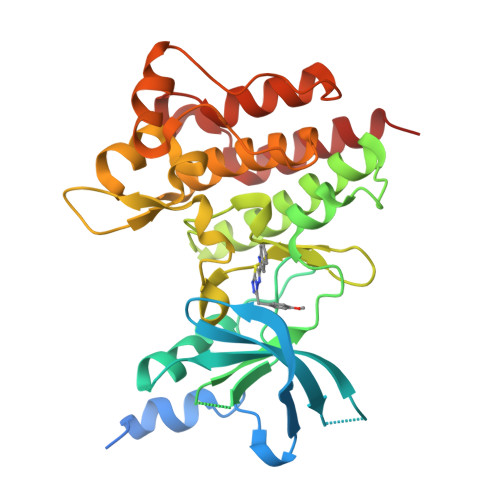Discovery, optimization and biological evaluation for novel c-Met kinase inhibitors
Yuan, H., Liu, Q., Zhang, L., Hu, S., Chen, T., Li, H., Chen, Y., Xu, Y., Lu, T.(2018) Eur J Med Chem 143: 491-502
- PubMed: 29202410
- DOI: https://doi.org/10.1016/j.ejmech.2017.11.073
- Primary Citation of Related Structures:
5YA5 - PubMed Abstract:
The c-Met kinase has emerged as an attractive target for developing antitumor agents because of its close relationship with the development of many human cancers, poor clinical outcomes and even drug resistance. A series of novel c-Met kinase inhibitors have been identified with multiple workflow in this work, including virtual screening, X-ray crystallography, biological evaluation and structural optimization. The experimentally determined crystal structure of the best hit compound HL-11 in c-Met kinase domain was highly consistent with the computational prediction. Comparison of the hit compounds with different c-Met kinase inhibitory activity by molecular dynamics simulations suggested the key protein-ligand interactions for structural optimization. Based on these, structural optimization produced compound 11e with better c-Met kinase inhibitory activity and improved anti-proliferative activity. These experimental findings proved the reliability and efficiency of our in silico methods. This strategy will facilitate further lead discovery and optimization for novel c-Met kinase inhibitors.
Organizational Affiliation:
Laboratory of Molecular Design and Drug Discovery, School of Science, China Pharmaceutical University, 24 Tongjiaxiang, Nanjing 210009, China; State Key Laboratory of Natural Medicines, Jiangsu Key Laboratory of Drug Discovery for Metabolic Disease, Institute of Pharmaceutical Research, China Pharmaceutical University, 24 Tongjiaxiang, Nanjing 210009, China.



















